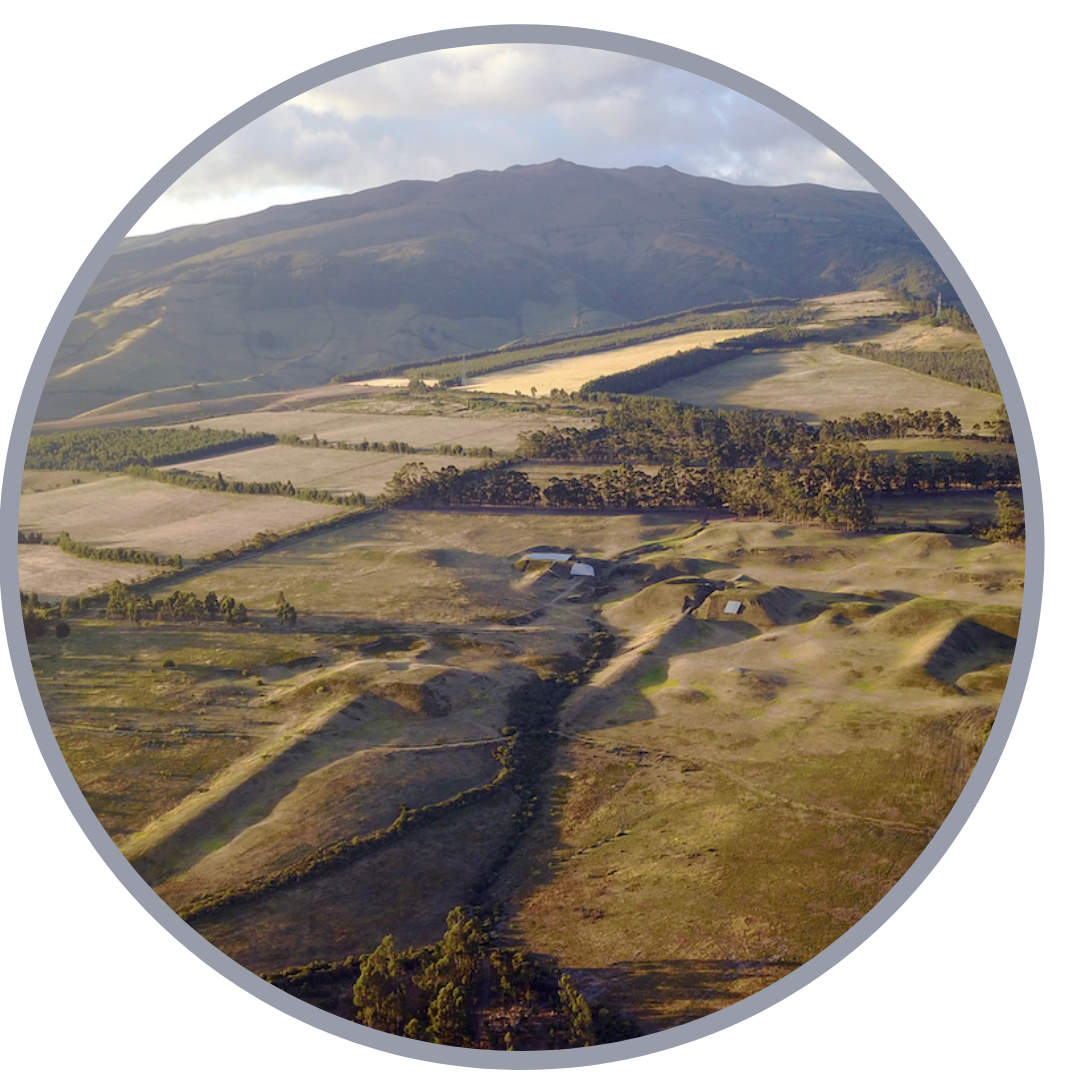Cochasquí and the Monumental World of the Caras: The Rise and Fall of a Barbacoan Society
Ryan Scott Hechler

Tuesday, December 07, 2021 | 02:00 pm
Virtual
About:
Barbacoan-speaking societies thrived throughout northern Ecuador and southwestern Colombia on the eve of Spanish conquest. Interregional ties between these culturally diverse groups facilitated complex and far-reaching systems of exchange and political alliances. One ethnic group in the highlands of northern Ecuador, the Cara, are renowned for their monumental centers, which are comprised of earthen mounds, known locally as “tolas.” Monumental developments are often characterized by two periods, with large, rounded burial mounds being built until around AD 1280, during which time a far-reaching eruption from the Quilotoa Volcano blanketed the region in up to fifteen centimeters of ash and signaled the gradual transition to the Little Ice Age. Sheer human resiliency persisted in the face of natural disaster and, somewhat suddenly, local people switched to constructing massive platform mounds, typically amongst earlier burial mound centers. Cochasquí, the highest elevation Cara center, exemplifies such a transition. Cochasquí quickly rose as one of the major seats of regional political power and was one of the first to fall during the regional conquest by Tawantinsuyu – the Inka Empire. Due to the state of preservation of the site, Cochasquí offers an excellent case study in understanding local and regional developments through short periods of rapid change. Today, Cochasquí is important to regional Indigenous identities and is cherished as a symbol of national cultural heritage.
Ryan Hechler is in the Anthropology PhD program at Tulane University. He holds an Anthropology MA from McGill University and History and Art History dual BAs from Virginia Commonwealth University. He is a director and founder of the Proyecto Arqueológico Cochasquí-Mojanda in Ecuador’s northern highlands. Since 2016, he studies Cusco Quechua supported by the US Department of Education’s Foreign Language Area Studies Fellowship. He is a Digital Scholarship Fellow of The University of Texas at Austin’s Teresa Lozano Long Institute of Latin American Studies and Nettie Lee Benson Latin American Collection, where he coordinated a large-scale GIS project – “Toponymic Mapping of Ecuador’s Oriente Region: Bridging the Divide in Geographic Information Knowledge via Open-Access Geospatial Datasets.” He is a recipient of the Fulbright-Hays Doctoral Dissertation Research Abroad grant for his studies in Ecuador and is a forthcoming Visiting Researcher at the Ibero-Amerikanisches Institut in Berlin, Germany, where he will review their Max Uhle collection pertaining to Ecuador.
Notes:
This lecture is free and open to the public. Individuals of all abilities are encouraged to attend LAII-sponsored events. If you are a person with a disability who requires a reasonable accommodation in order to participate in one of our events, please visit laii.unm.edu/events/accessibility.html. You can find more information on available accommodations on the UNM Accessibility Resource Center website. For more information, visit laii.unm.edu or contact laiioutreach@unm.ed
